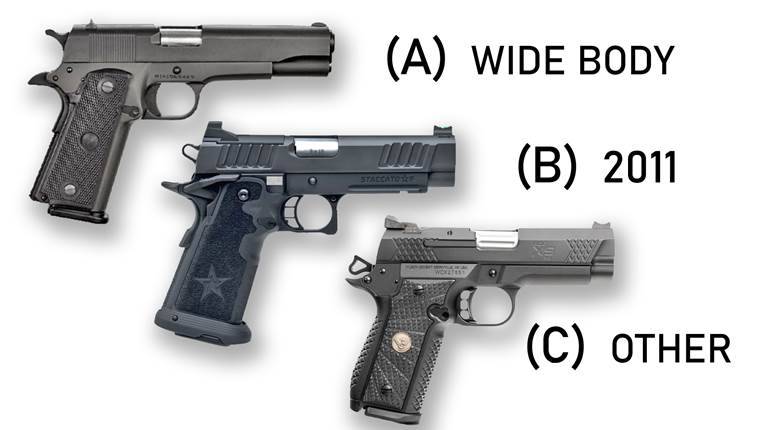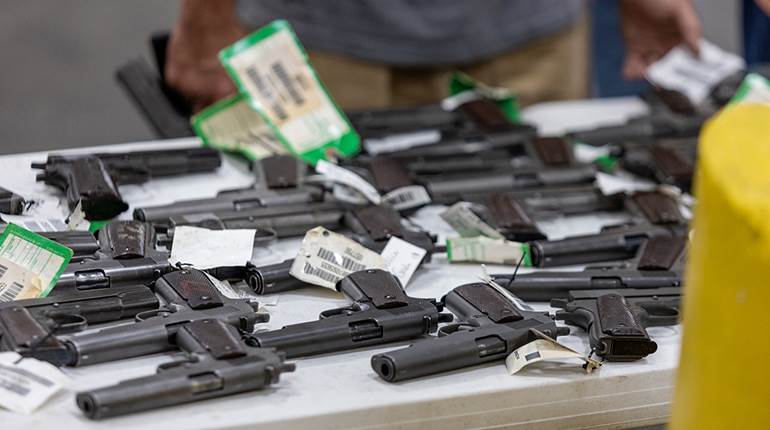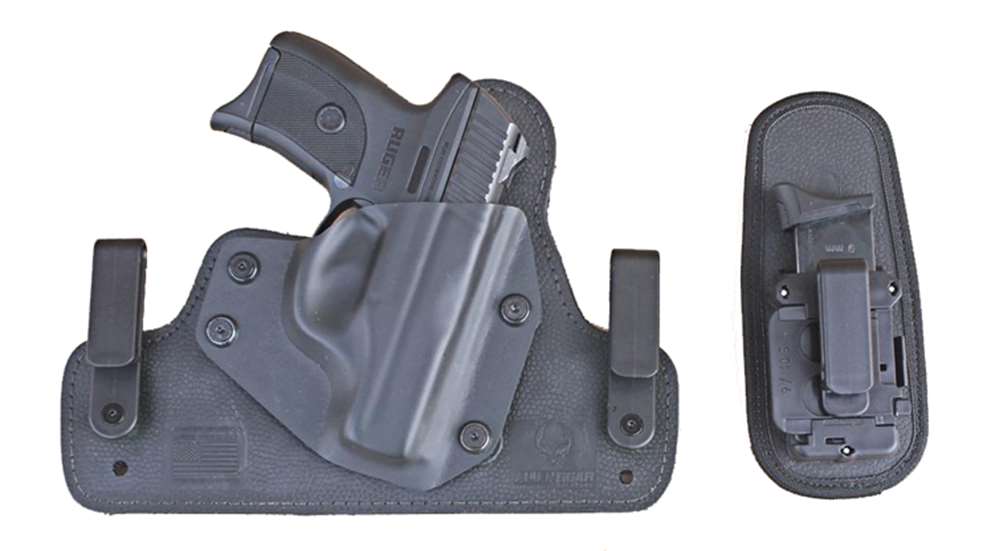
If you have just received a state-issued concealed-carry permit in the mail, congratulations on taking an important step in the development of your personal-defense plan. Although state-sanctioned permit classes are chalk full of legally relevant information such as "shoot/don't shoot" scenarios and lists of places you can and can't carry, there's usually very little information about organizing a daily concealed-carry gear set, proper shooting technique or defensive mindset. There's also very little conversation about additional expenses such as gun licensing and/or registration fees, shooting range fees or the cost of educational materials including books, video courses or live-fire classes.
The following is an overview of how to organize a solid, basic set of concealed-carry hardware for new permit holders. My goal is to provide the hardware checklist, along with links to additional resources that I wish someone had handed me when I walked out of my permit class more than 20 years ago.
Handguns require a more extensive set of support gear than someone new to the scene might expect. In the past, I've advised friends and family members to calculate how much money they have to invest in a defensive handgun and then double that amount to cover the cost of all the items they'll need. That way they can plan a purchasing schedule to fit their budget. It's important to remember that while some items can be purchased over time as budgets allow, others will need to be on hand the same day you pick up the gun from the store.
1. Selecting a Daily-Carry Handgun
Thanks to the ever expanding number of individuals with permits to pack, Americans currently have access to an exceptionally diverse selection of defensive handguns. This diversity serves the community well because no two shooters are alike. We all have different preferences, hand shapes, daily carry needs and different levels of tolerance for felt recoil.
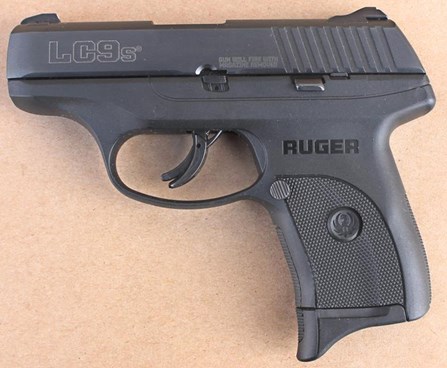
I opted to assemble concealed-carry rigs for two guns I haven't worked with before but consider ideal candidates for daily carry: a Ruger LC9s Pro single-stack 9 mm and a six-shot Ruger LCR revolver chambered in .327 Federal Mag. I'm not saying that these little Rugers are the two guns that everyone should buy, but they do exemplify many of the qualities to consider when selecting a model for carry, which include:
- Manufactured by a reputable company with good customer service
- Proven model with a track record for reliability
- Slim, compact and lightweight to encourage daily use
- Comfortably fits your hands
- Useful, easy-to-see sights
- Smooth, clean trigger pull for improved shot placement
- Ready supply of holsters, magazines, upgrades and accessories
- Chambered in a caliber that’s affordable and comfortable for regular practice
- Reasonably priced and easy to find
I'm not convinced that it's necessary to spend a small fortune in order to obtain a rugged, reliable handgun with enough punch to get the job done if the need for personal protection should arise. Carry guns are everyday tools that are going to be subjected to sweat, dirt and holster rub, meaning, the cosmetics of the gun (i.e. it's fancy or pretty looking features) are going to take a beating. Therefore, what a carry gun looks like should be secondary to it's ergonomics and function.
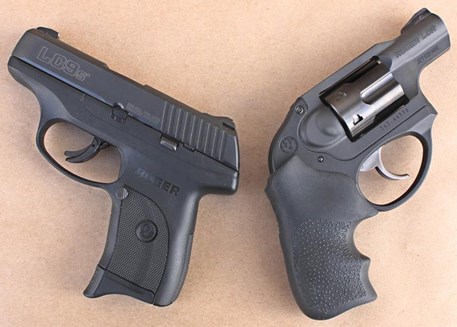
It's important to select a model you're willing to practice with on a regular basis to build up proficiency. If the gun kicks too hard, doesn't fit your hands properly or requires hard-to-find or expensive ammunition, then it's probably going to get left at home.
Additional Resources:
7 Tips for First-Time Handgun Buyers
The American Rifleman Ladies Pistol Project
Results: American Rifleman Ladies Pistol Project II—Concealed Carry Pistols
2. Additional Magazines or Reloading Devices
Of all the concealed-carry practices that self-defense experts argue about, there's at least one on which they agree: All legally concealed handguns should be carried with the means to reload them. For semi-automatic pistols, this means additional magazines. Civilian practitioners generally settle on carrying one or two spare magazines on their person along with their pistols. Some pistols ship with two magazines, some with three and others with just one magazine, like the Ruger LC9s. So how many additional magazines is enough? My personal preference for daily-carry guns is to keep enough spare magazines on hand to swap out the magazines that are carried. If the gun is packed with two magazines (one in the grip and one on the hip) then I would want a total of four magazines. If three magazines are carried (one in the grip and two on the hip) then buy a total of six.
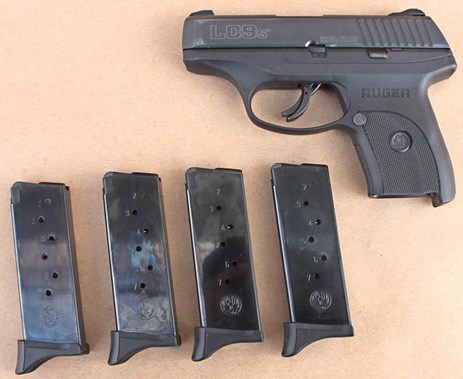
This four- to six-magazine plan provides a good deal of flexibility. If you choose to rotate out your magazines so that they can rest (another topic of debate), this number provides enough to have a complete working set and resting set. Extra magazines are handy to have at the range to either reduce load time by loading ahead or allowing one person to load while another shoots. But most importantly, having a few more magazines will keep the pistol up and running in case one of them malfunctions, is damaged or lost. If you can't spare the cash for four to six magazines, then go with a minimum of three, two to carry and a spare in case one breaks.
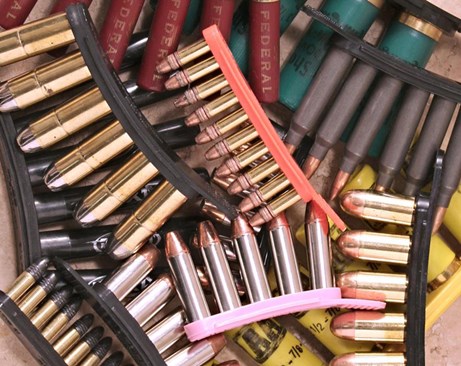
For revolvers, there are two aftermarket ammunition accessories that come in handy for civilian applications. Strip loaders, like the Tuff Products' Quick Strip, hold between five to six rounds of center-fire pistol ammunition in a straight line so that two rounds can be loaded into the cylinder at a time. Strip loaders have a flat profile that allows them to ride comfortably in a pants or coat pocket.
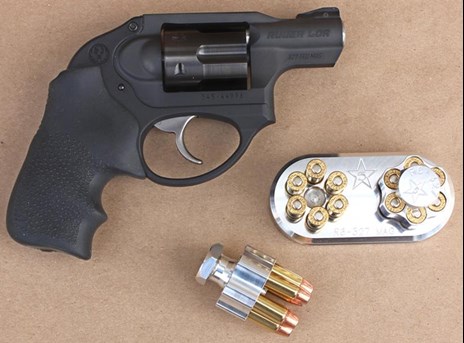
Twist or push-knob speed loaders, like the 5-Star Firearms aluminum loaders shown here, allow all of the chambers of the revolver to be loaded simultaneously. 5-Star is one of the companies that offer loading blocks that can be used to store their speed loaders or speed up the loading process at the shooting range. Speed loaders provide the fastest reload time of any device I've found, but they are not quite as convenient to carry as the strips. I would not recommend carrying loose rounds in a pocket for personal protection. Loose ammunition is fine for casual shooting excursions, but it is too slow to load in a pinch. Like semi-automatics, revolvers should be carried with one or two reloading devices.
3. Holsters and Magazine Carriers
Holsters and carry systems are just as diverse as the guns they carry. The most important tip I can give you here is to always use a holster when carrying a gun. They keep the gun where you need it to be, in the proper orientation and they protect the gun from dirt and damage that may cause it to malfunction. Magazine carriers provide the same functions as a holster and should also be part of the gear set. Speed strips and loaders can be dropped into a pocket but it’s best that they ride in a dedicated pocket without any other pocketable bric-a-brac.
The LC9s Pro is shown here with a set-up for strong-side (right-handed in my case) inside-the-waistband (IWB) carry using an Alien Gear Holsters' combo set that includes a Cloak Tuck 3.0 IWB holster and one padded magazine carrier. The LCR revolver is configured for pocket carry with a Sticky Holsters' MD-5 Medium holster and a speed loader.
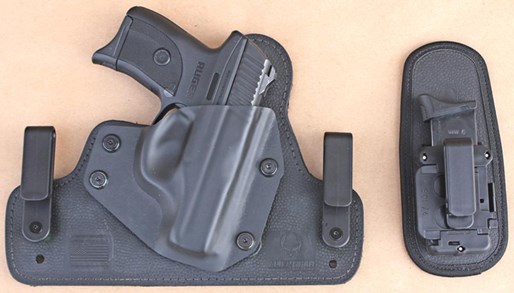
No carry system is instantaneously comfortable. Just like a new pair of shoes, all holsters require a break-in period for the holster itself and the body surface against which it’s riding. Using a holster for six hours and then declaring it uncomfortable does not provide enough time for a realistic test. Give it at least a few days before giving up.
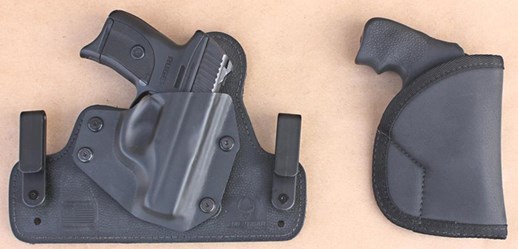
While it would be helpful to have the first holster tested be a perfect fit for the job, folks usually end up trying different styles until they find the best balance of features for their needs. Don't get frustrated, it's just part of the learning curve. Many gun owners find that they need more than one holster in order to accommodate changes in their wardrobe. If you choose to use multiple holster systems, then don't forget to practice drawing and re-holstering with each of them.
Additional Resources:
5 Qualities to Look for in Concealed-Carry Holsters
7 Tips for Pocket Carry
4. Secure Storage
The time-tested gun safety rule everyone should follow at all times is to treat all guns as if they are loaded and act accordingly. In the case of concealed-carry guns, they will be fully loaded when in use. There are only two places that a loaded gun can be safely stored at any given time, on your person (in a holster) or inside a secure storage device.
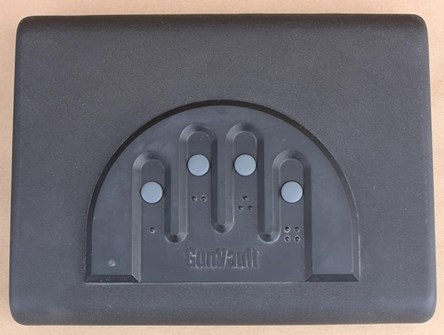
The product options for safe gun storage are described in detail in another article. But one of the best all-around options for first-time handgun owners is a quick-access strong box like the GunVault MV 500 MicroVault shown here. These boxes are small enough to fit in a drawer but large enough to hold a gun, spare magazines and a few other small items. The mechanical or electronic push-button locks can be accessed quickly by authorized users while resisting tampering by unauthorized individuals. They can be bolted down for added security and have relatively affordable price tags.
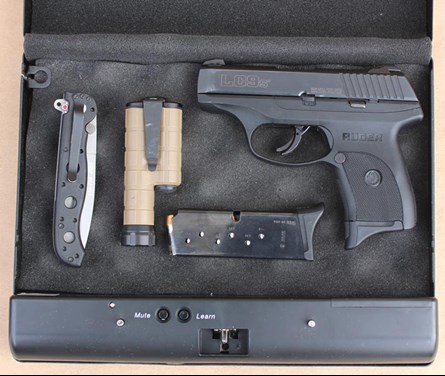
Additional Resources:
Options for Safe Gun Storage
5. On-Hand Ammunition and Storage
How much ammunition should be kept on hand to feed a defensive handgun is a topic on which shooting enthusiasts and industry insiders will never agree. Some folks think that keeping an entire 50-round box at home is a bit excessive, while others say that you need to squirrel away at least 3,000 rounds per gun. Since there is no recognized at-home round count calculator to work with, here's what I suggest as a fairly affordable starting point.
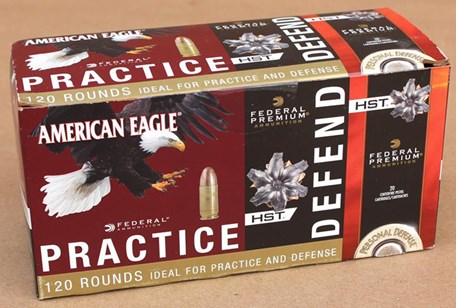
Once practice-grade and defense-grade ammunition has been tested for reliable operation and acceptable accuracy in a particular gun, then I would recommend stocking up with at least 200 rounds of practice loads (usually sold in 50-round boxes) and enough defensive hollow points (generally sold in 20-round boxes) to fill up all of your daily-carry magazines at least three times. That usually works out to around 40 to 60 rounds, depending on your magazine's capacity. This is enough ammunition for about four visits to a shooting range if you fire 50 rounds of practice-grade ammo and a couple of magazines worth of hollow points. When my budget was tight, this was just enough ammunition to keep me practicing without having to restock after every trip.
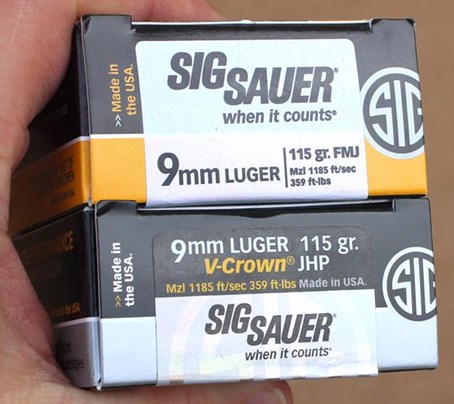
Over the last few years, some ammunition manufacturers have started offering what's known as “ballistically matched” practice ammunition. This means that certain practice-grade rounds have been loaded with powders and bullets that will perform in the same way as a particular defensive hollow point in regards to accuracy, point of impact and levels of felt recoil. The goal is to reduce the cost of practice by not having to shoot up your defensive hollow points. Some of these ballistically matched offerings are sold packaged together, like Federal Premium's Practice & Defend Pack, or separately like SIG Sauer's Elite Performance offerings.
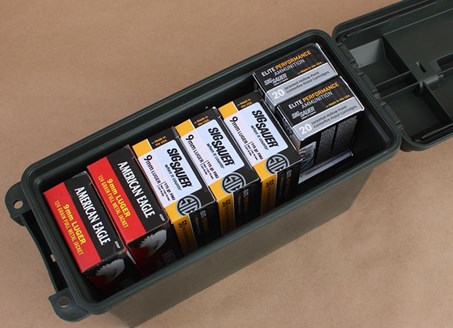
It's a good idea to keep on-hand ammunition in a moisture-resistant storage container, like this inexpensive MTM Case-Gard ammo box. Boxes like this one keep the ammunition clean, dry and properly organized. The carry handle makes it much easier to transport the ammunition and, most importantly, this box can be locked with a small padlock to help prevent unauthorized access.
6. Cleaning Supplies
Handguns that are carried on a daily basis tend to get very dirty very quickly, especially if the gun is carried in a pocket. Lubrication tends to run off or evaporate quickly as well. The result is a pistol that may not run reliably in a pinch. If you don't believe me, take a look at the frame of a little pocket semi-automatic after a few weeks without a bath.
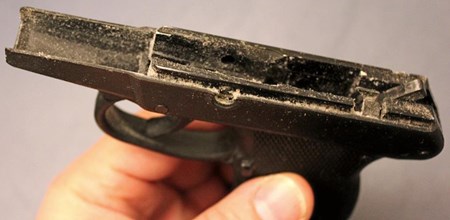
Although cleaning systems come in all shapes, sizes and price points, it's not necessary for first-time gun owners to spend a fortune up-front to keep a single handgun clean. Start with a tool kit that contains a cleaning rod, brushes and a barrel jag like the Real Avid Gun Boss Pro. Some companies like Rand CLP offer all-in-one products called CLPs, which contain cleaners, lubricants and protective compounds (rust inhibitors) in a single solution. Like other multi-purpose products, CLPs do a good job in each category, but not a great job. After working with the gun for a while, it will become clear if more specialized, single-purpose products, like a dedicated bore scrubbing agent, will be needed to keep the gun up and running. Silicon treated finishing cloths, like Birchwood Casey's Gun & Reel cloths, provide a layer of protection against corrosion.
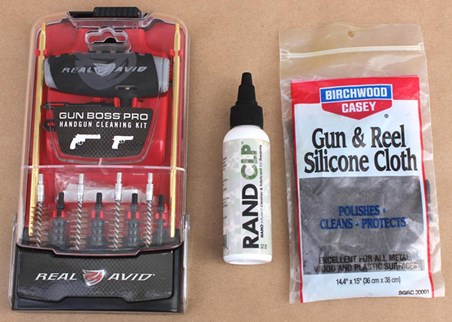
Be sure to strip down and inspect your gun at least once a week until you get a feel for how often it needs to be cleaned.
Additional Resources:
How to Clean a Handgun
8 Checks to Run Before Firing Your New Gun
7. Additional Daily-Carry Tools
Although concealed handguns are powerful tools, it's important to remember that packing a pistol is just one facet of a well-rounded self-defense plan. Which additional defensive tools are right for you will depend on your preferences and personal needs. That being said, a good number of the folks I've interviewed say a daily-carry set is incomplete without a quality knife and hand-held flashlight. While these tools are useful for defensive purposes, they come in handy for handling more routine, everyday problems that crop up along the way.
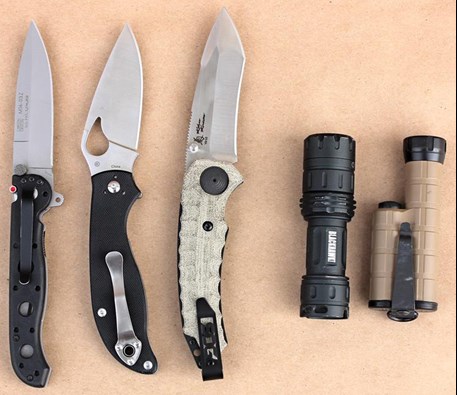
Additional Resources:
Fleshing Out Your Every Day Carry
Gallery: Practical and Tactical Folding Knives
Lights On Carry Guns?
Assembling the Set
Here is a look at two of many possible daily-carry rig configurations that I found to be lightweight and comfortable to carry. The Ruger LC9s Pro is set up for in-the-waistband carry while the LCR is configured for carry in a pants pocket.
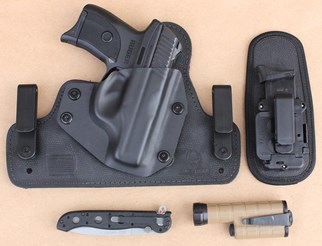
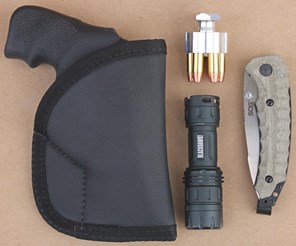
Again, which items to include as part of a daily-carry rig and its support gear is a hotly debated topic. The disagreements are driven by the fact that no two people have the same needs or preferences. However, based on experience and the information I've gleaned from others over the years, having the following items in addition to a reliable handgun will provide a solid foundation on which to build:
- Holster(s) and magazine pouches (for semi-automatics)
- Additional Loading devices (magazines or speed loaders)
- A lockable storage device (strong box, safe, locking case, etc.)
- Defense-grade ammunition
- Practice-grade ammunition
- Moisture-resistant ammunition storage container
- Folding knife or multi-tool with a knife blade
- Handheld flashlight












